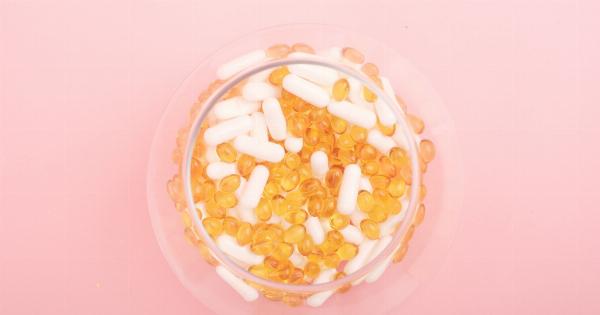Gray hair is a natural part of aging, but for many people, it can be a source of frustration and self-consciousness. Fortunately, there are several vitamins and minerals that can help slow down the graying process, or even prevent it altogether.
Vitamin B12
Vitamin B12 is perhaps the most important vitamin for healthy hair, as it helps to produce red blood cells that carry oxygen to the hair follicles.
Without enough oxygen, the follicles can become damaged and stop producing pigment, leading to gray hair.
The recommended daily allowance of B12 is 2.4 micrograms, but many people don’t get enough of it in their diets. Foods that are high in B12 include:.
- Beef liver
- Clams
- Tuna
- Salmon
- Eggs
- Fortified breakfast cereals
Folic acid
Folic acid, also known as vitamin B9, is another important nutrient for hair health. It helps to keep the red blood cells healthy, which in turn supports healthy hair growth and pigment production.
The recommended daily intake of folic acid is 400 micrograms. Foods that are high in folic acid include:.
- Leafy green vegetables (such as spinach and kale)
- Asparagus
- Citrus fruits
- Beans
- Fortified grains and cereals
Vitamin D
Vitamin D is important for overall health, but it may also play a role in preventing gray hair.
A study published in the International Journal of Trichology found that people with gray hair had lower levels of vitamin D in their blood than those without gray hair.
The recommended daily intake of vitamin D is 600-800 IU. Foods that are high in vitamin D include:.
- Fatty fish (such as salmon and tuna)
- Cheese
- Egg yolks
- Mushrooms
- Fortified milk and orange juice
Copper
Copper is a mineral that plays a role in pigment production, so it’s not surprising that a deficiency in copper can lead to gray hair. However, too much copper can also be harmful, so it’s important to get the right amount.
The recommended daily intake of copper is 900 micrograms for adults. Foods that are high in copper include:.
- Shellfish (such as oysters and clams)
- Nuts and seeds (such as almonds and pumpkin seeds)
- Organ meats (such as liver and kidneys)
- Dark chocolate
- Leafy green vegetables (such as kale and spinach)
Zinc
Zinc is another mineral that plays a role in maintaining healthy hair. It helps to keep the oil glands around the hair follicles functioning properly, which can prevent hair from becoming brittle and gray.
The recommended daily intake of zinc is 11 mg for adult men and 8 mg for adult women. Foods that are high in zinc include:.
- Beef
- Pork
- Poultry
- Shellfish
- Beans
- Nuts and seeds
Iron
Iron is important for healthy hair because it helps to carry oxygen to the hair follicles. Without enough iron, the follicles can become damaged and stop producing pigment, leading to gray hair.
The recommended daily intake of iron is 8 mg for adult men and 18 mg for adult women. Foods that are high in iron include:.
- Red meat
- Poultry
- Seafood
- Beans
- Leafy green vegetables
- Fortified cereals and breads
Vitamin E
Vitamin E is an antioxidant that helps to protect the hair follicles from damage. It also helps to improve blood circulation, which can promote healthy hair growth and prevent gray hair.
The recommended daily intake of vitamin E is 15 mg for adults. Foods that are high in vitamin E include:.
- Nuts and seeds
- Leafy green vegetables
- Avocado
- Broccoli
- Fortified cereals and breads
Pantothenic acid
Pantothenic acid, also known as vitamin B5, is important for healthy hair because it helps to nourish the hair follicles and improve blood flow to the scalp.
The recommended daily intake of pantothenic acid is 5 mg for adults. Foods that are high in pantothenic acid include:.
- Meat (such as chicken and beef)
- Fish (such as salmon and tuna)
- Whole grains
- Nuts and seeds
- Cruciferous vegetables (such as broccoli and cauliflower)
Omega-3 fatty acids
Omega-3 fatty acids are important for overall health, but they may also play a role in preventing gray hair.
A study published in the journal PLoS One found that people with higher levels of omega-3 fatty acids in their blood were less likely to have gray hair.
The recommended daily intake of omega-3 fatty acids is 250-500 mg. Foods that are high in omega-3 fatty acids include:.
- Fatty fish (such as salmon and tuna)
- Flaxseeds and flaxseed oil
- Chia seeds
- Walnuts
- Soybeans
Conclusion
Gray hair is a natural part of aging, but it can be prevented or slowed down with the right vitamins and minerals. By incorporating these nutrients into your diet, you can keep your hair looking healthy and youthful for longer.































